Is it time to invest in your blog?
With the cost of PPC constantly increasing, you might be considering other ways to promote your website. And blogging is a good way to do that.
Blogging is a long-term strategy to generate inbound traffic to your website, by posting the kind of content your audience wants to read.
If you haven’t been using your blog to its full potential or have given up on it all together, working with an SEO content specialist could be a good decision.
What is an SEO content specialist?
An SEO content specialist is someone who has a pivotal role in managing your business blog. Depending on what you need, that could include everything from developing your strategy and content plan, to writing and posting the content itself.
SEO content writer vs SEO content specialist
SEO content writers research and write search-engine-optimised content. Some will do this using titles and SEO keywords that you, or your SEO, provide. Some will also research your content needs and do their own keyword research.
SEO content specialists also research and write search-engine-optimised content. But they’re equally concerned with developing your strategy and monitoring your results.
Why hire an SEO content specialist?
You should hire an SEO content specialist if you want someone who can manage your business blog. From improving your existing content to developing the strategy and publishing schedule for your new content and making it all happen.
Here are 14 things I could do for your blog as your SEO content specialist.
1. Compiling a content catalogue
It’s a good idea to set up and maintain a catalogue of all your existing content. This will help us see what you already have, set up internal linking and identify content gaps that need to be filled.
It also helps us to manage your content holistically. So, for example, if a blog title changes, we can find every mention of that title and make sure it’s updated across the whole blog.

The inventory will log each piece of content, including the:
- Post title
- Post URL
- Categories/tags
- Internal links
- Date of the original post
- Date of the last update.
2. Content auditing
A content audit involves analysing each piece of content on your blog to make sure it’s working for you and see how it’s serving your business.
For example, is the content:
- Still current and relevant?
- Valuable for your audience?
- Ranking well and for the right keywords?
- Up-to-date with the most current information?
- Thorough and detailed enough to compete with what’s already ranking?
I’ll assess the performance of your content using data from GA4 and Google Search Console.
Improving substandard content
I hate waste and believe that if you’ve invested in something, you should squeeze every last drop of value from it.
If I find a piece of content that’s lacking in some way, the first thing I’ll do is decide if it can be Refreshed, Rewritten or Repurposed.
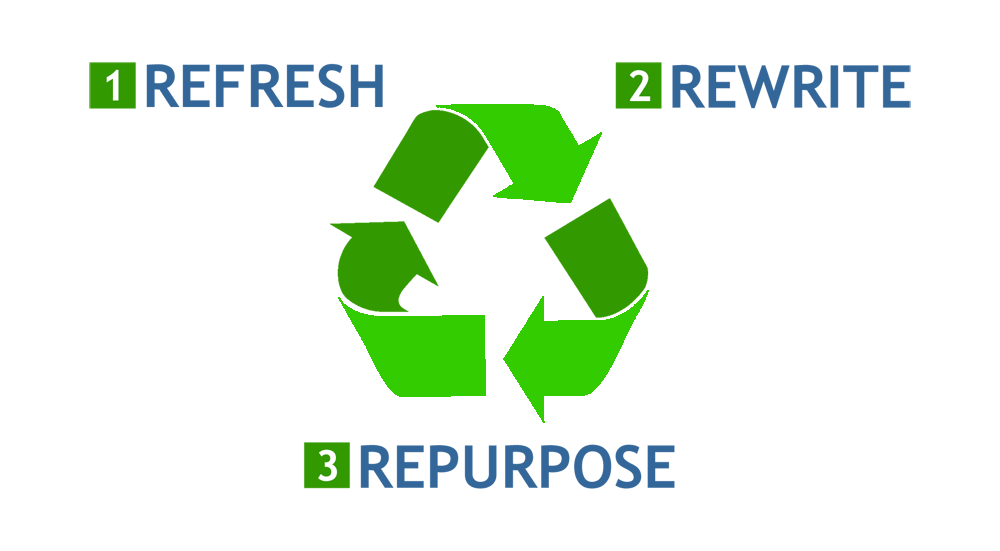
But if it’s a truly hopeless case, and isn’t doing your brand any favours, it will be unceremoniously dumped and we’ll never speak of it again.
3. Content strategy and ideas
When we’re planning your content, I always start with the strategy. A sound strategy will inform my ideas and make sure every piece of content I write is serving your business and helping you meet your goals.
My content strategy includes the following questions:
- Who is your target audience and who are we talking to?
- What do you want your content to achieve for your business?
- Which specific products/services do you want to focus on?
- What questions is your audience asking and what are your answers?
- What is your brand’s personality and how do want your content to sound?
4. Audience research
Before I put together your content plan, I’ll research your audience and ideal customers to see what kind of questions they’re asking and what they want to know.
The beauty of content is that you can use it to attract prospects at all stages of awareness and give them the information and education they need to become customers.
Writing for different awareness levels
Legendary copywriter, Eugene Schwartz identified five stages of awareness your prospects will typically go through before they buy from you. With content, we can target at least four of them.
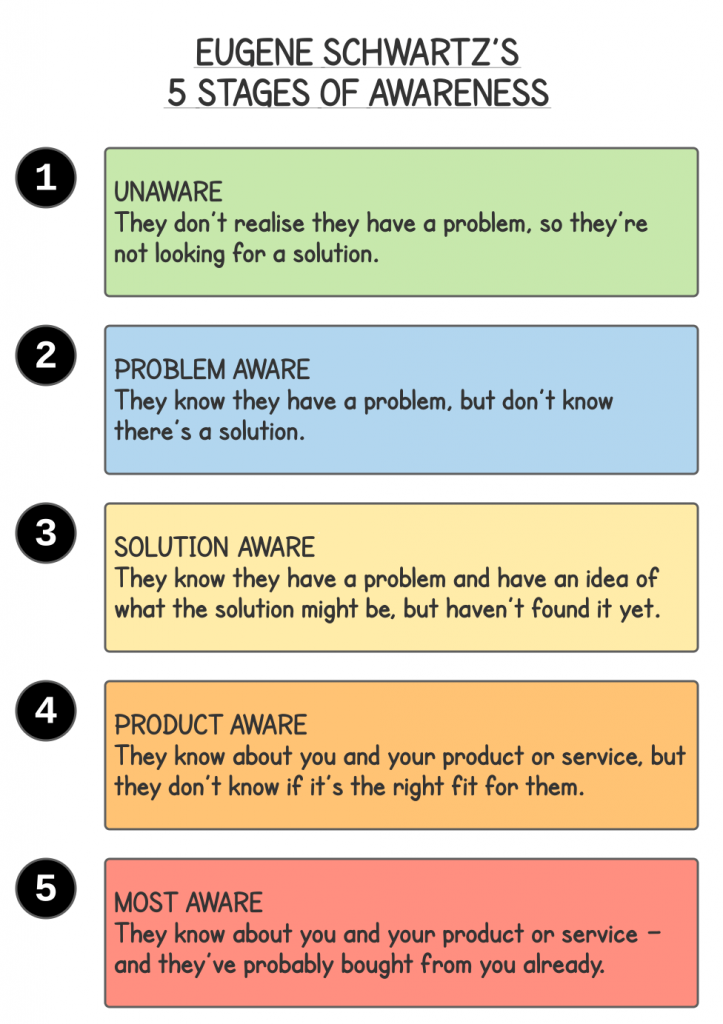
Writing for different buyer types and temperaments
In addition to prospects with different awareness levels, we can look at creating content for different buyer types and temperaments — especially those you particularly want to target.
For example:
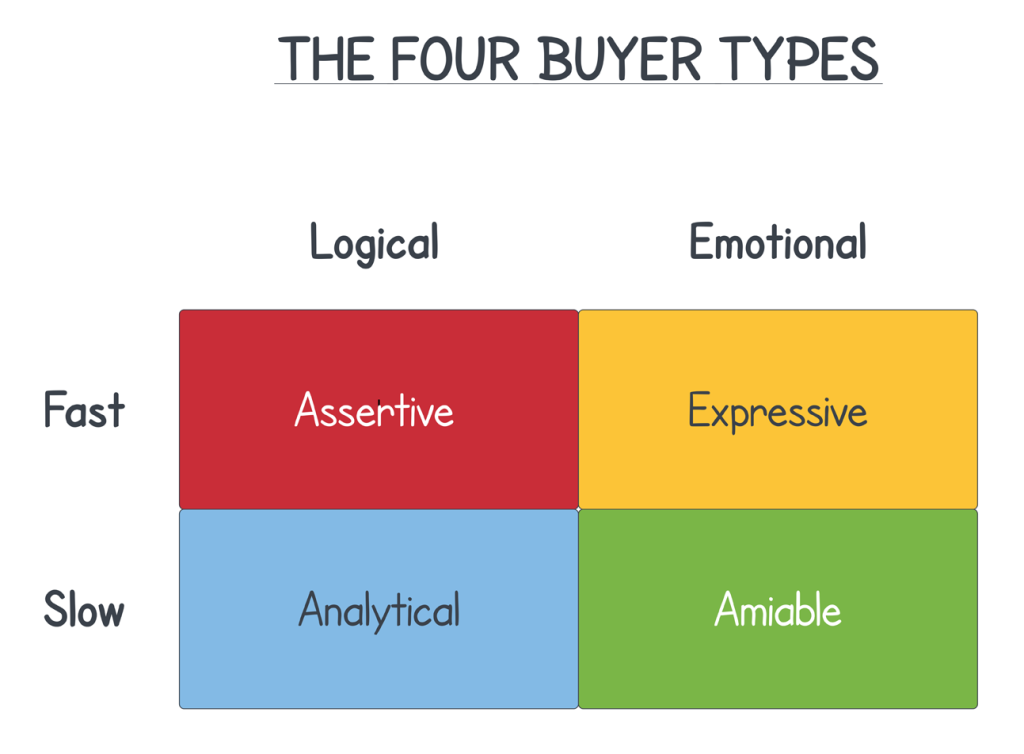
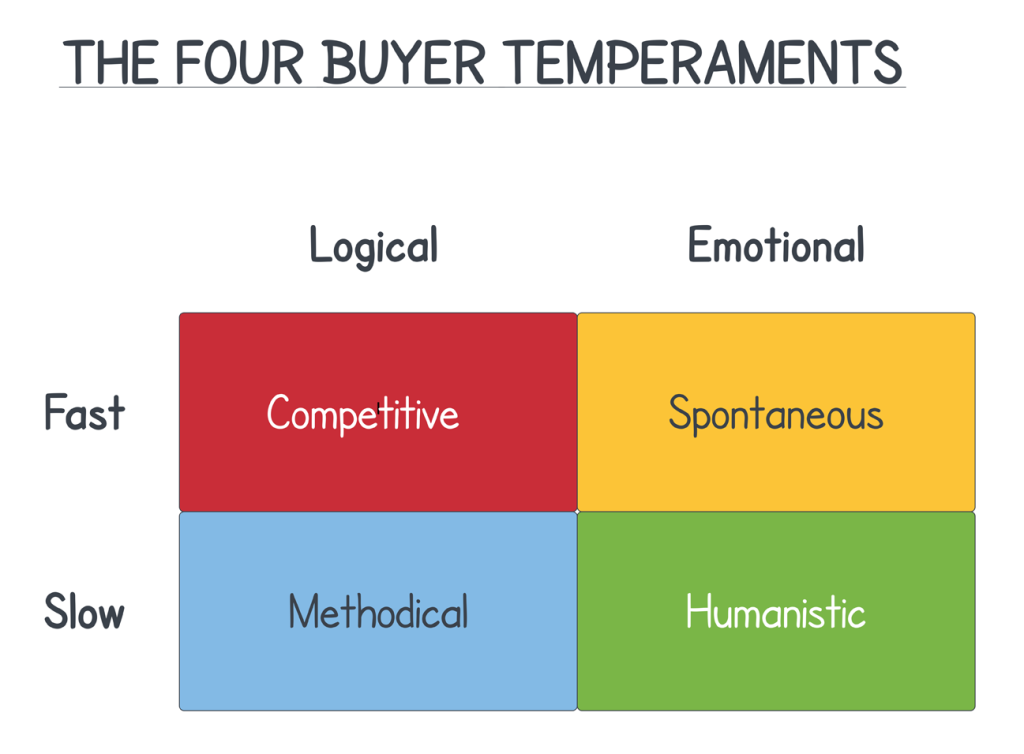
Understanding each buyer type/temperament, and how they make their purchasing decisions, makes it easier to know what content to create for them.
You can read more about this in my article How to write content for different buyer types >>
5. Competitor research
In terms of content, your competitors will be the sites that are already ranking at the top of Google for the phrase you want to target. When I’m creating your content, I’ll use the top three organic results as a benchmark.
Why? Because, in the example below*, the top three organic results get almost 70% of the first page clicks — so, ideally, this is where you want to be.
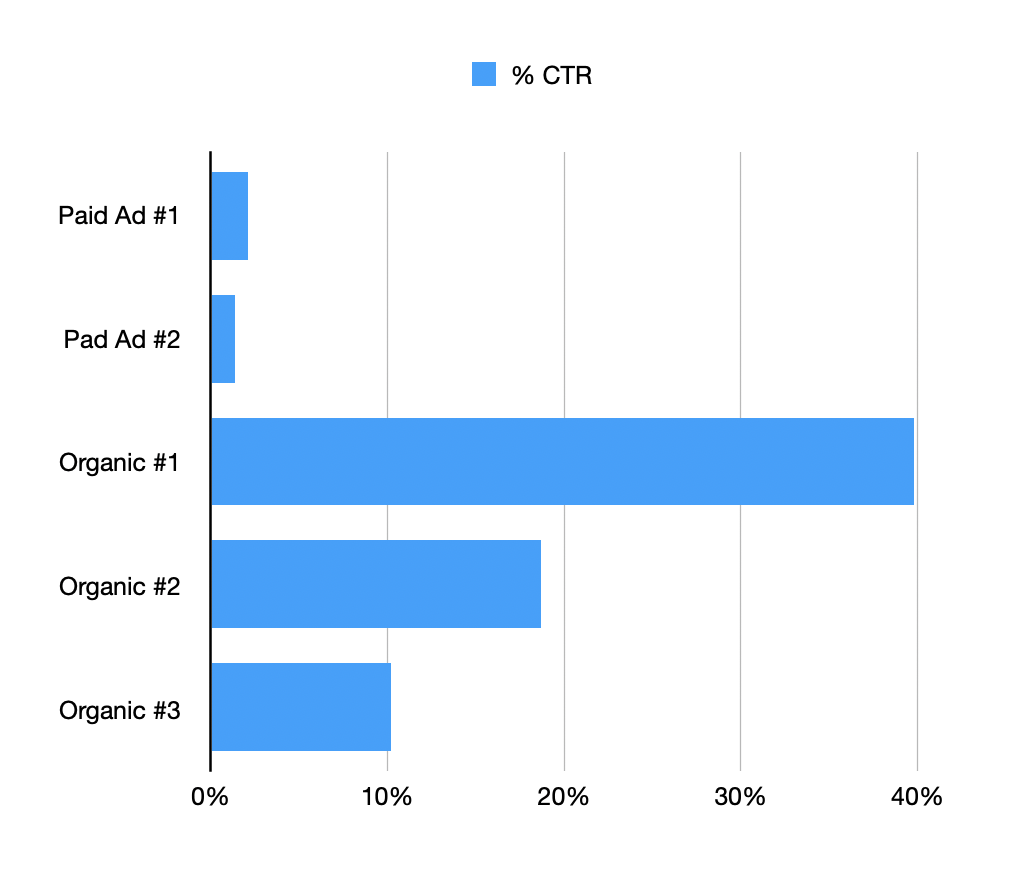
*The example applies to SERPs with no featured snippet, local pack or other media.
Although no one can guarantee to get your content ranking in the top three, this is where I’m aiming — because if you don’t try for the top, you’ll fail by default.
When aiming for the top, I’ll strive to make sure my article is better than what’s currently ranking. This could go as far as reverse engineering the posts at the top to work out how they got there. I’m devious like that.
6. Subject research
I’ll research the subject matter for your article meticulously, using and citing credible and original sources wherever possible.
As any decent content writer will tell you, this can be a frustrating process. It often involves going down deep rabbit holes, following links from one source to another. Until you find a usable original source, or reach an impassable dead end. Goddammit!
With AI-written articles and AI-powered search coming to a search engine near you, I expect those credible and original sources will become even harder to find. But it will be worth finding them to make sure your content is trustworthy and reputable.
7. SEO keyword research
SEO keyword research will help me decide on the keywords to target for each piece of content.
Choosing which keywords to target is a balancing act and a skill I’ve been sharpening for the last 15+ years.
There are a number of things I have to consider, including:
- Keyword relevance
Is the keyword relevant to your article? - Search intent
Does the keyword match the search intent of your audience? - Semantics
What associated words and phrases will Google expect to see? - Competitor websites/content
Who else is ranking for the keyword and is it worth competing with them? - Voice of customer research
Does the keyword use the language your customers are using? - Monthly traffic numbers
How many times a month is the keyword being looked up? - Keyword difficulty
How difficult will the keyword be to rank for?
8. Content calendar
When the article ideas have been researched to make sure they’re valid and workable, I’ll put them into a content calendar. I’ll share this content calendar with you and whoever else needs a copy.

Your content calendar is a schedule of your upcoming articles and when they’re due to be posted, to keep everyone in the loop. It can also include dates for each article’s performance to be reviewed and when it needs to be audited.
9. Content writing
When the content has been agreed and the content calendar is set up, I can get on with properly researching and writing the articles.
I’ll write the articles ahead of schedule, so you have time to review them and make any changes. I offer one round of complimentary revisions on each article, which has always been enough.
10. On-page SEO
Each article will be supplied with all the on-page SEO elements you need.
Here’s a quick rundown of the essentials.
Summary of main keywords
If you need them, I can provide a summary of the primary and secondary SEO keywords I’ve used.
Formatting notes
Each article will be formatted for reading on-screen, with all the SEO headings and sub-headings.
Next to each heading, I’ll include a heading tag to show which size heading it should be.
Custom meta description
The meta description is a short, two-line summary of what your article is about.
The meta description appears on Google’s search engine results page (SERP) and is used to to entice people to click on your link.
You can see it in the example below. It’s the two black lines of text under the blue page title.

Custom excerpt
Most blog menu pages have a setup like this.
Each article is introduced with its title, a featured image, an introductory excerpt and a ‘READ MORE’ button.
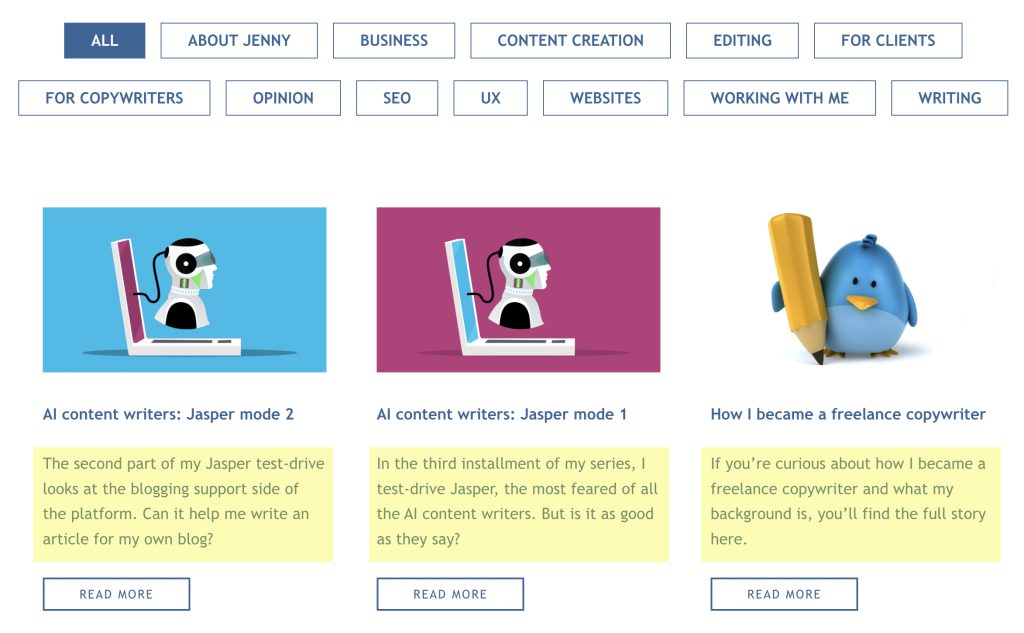
In this example, the custom excerpts are highlighted in yellow.
Categories and tags
Applying categories and tags to your articles helps Google to understand what they’re about. And it helps your human website visitors to find content they’re interested in and want to read.
If you have a blog you’ve already been working on, you may already have categories set up. If not, we can decide some suitable categories when we work on your content strategy.
11. Images
Using images and graphics helps to illustrate your articles, add visual interest and keep your audience engaged. And I can offer additional help here, if you need it.

In my 12 years as a conceptual copywriter, thinking visually and doing image research online were two big parts of my job. As a former graphic designer, I also know my way around Photoshop and can create custom graphics and charts, if needed.
12. Publishing to your blog
If you’re happy to give me access to your website’s backend, I can publish your articles directly to your blog and take care of all the formatting, images and on-page SEO for you.
If you have Google Search Console on your website, I can also submit each new article URL to Google to be crawled. Google will already be crawling your website from time to time, but if you have new content and request a crawl, it will happen sooner and get your article ranking quicker.
13. Rank tracking
When your article is published and the URL has been submitted to Google, we can start to track its progress in the rankings. I’ll usually give a new piece of content a week or two to get settled before I start checking on it.
SEO content writing isn’t an exact science. When I write your SEO content, I’ll do my best with the data I have available. But it’s when the article has been published, that we really see how the SEO is working.
If your article isn’t ranking, there may be things I can do to address that and give it a better chance.
14. Content promotion and repurposing
When your article is published, you can promote it across your channels, including to your social media followers and your email list.
Repurposing the content is also a good idea. This is because everyone is different and different people like to consume content in different ways. For example, some like reading, some like video and some prefer audio.
Producing the content in different formats, like these, will enable you to reach more people.
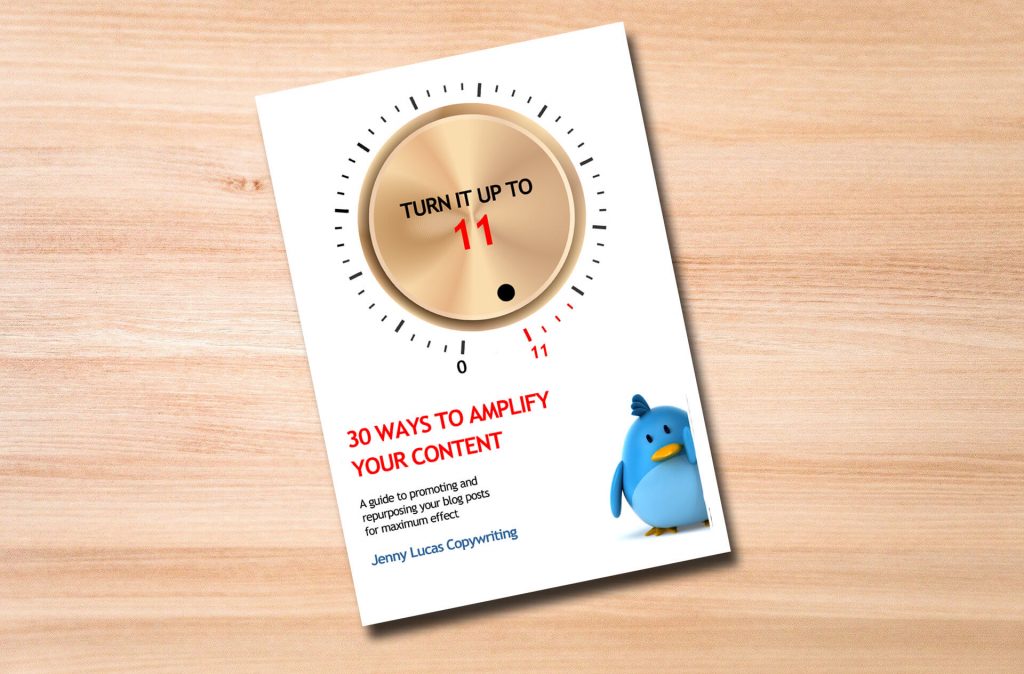
Although I don’t get involved in creating other types of content, I have produced an ebook titled, ‘Turn it up to 11’. The book is included with all of my content packages and is full of tips and ideas for promoting and repurposing your blog content.
Do you need an SEO content specialist?
If you like what you’ve read here and can see the value of using an SEO content specialist to help manage your blog, maybe I can help.
I’m Jenny Lucas, an SEO copywriter and content writer based in Leicester, UK.
You can find out more about my content services on my Content Writing page.
Or you can contact me directly for for more information.

You might also like…



